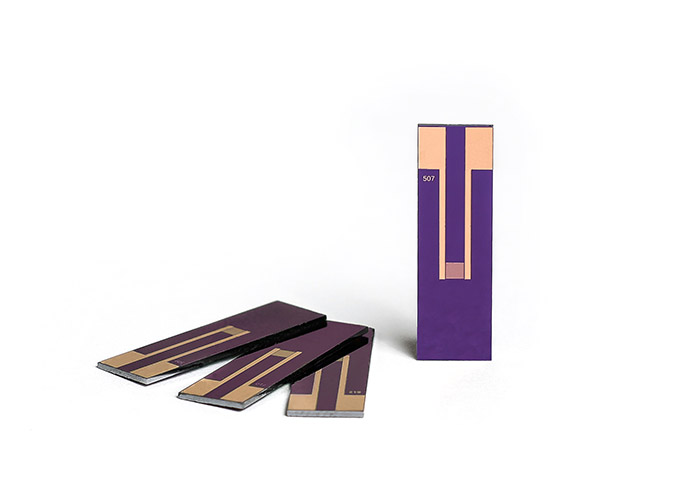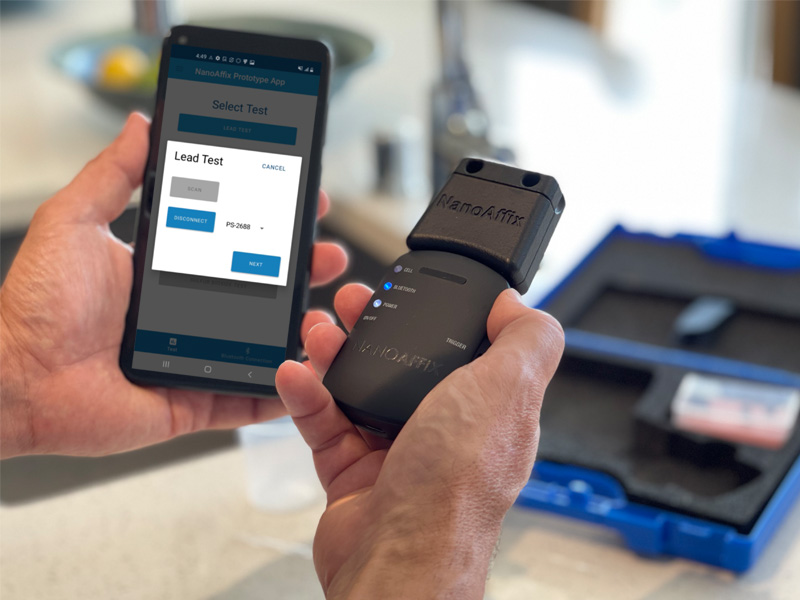Our Technology
Proprietary Technology
At the heart of the NanoAffix testing system is an electronic sensing platform that detects various contaminants in water or air. These contaminants include analytes, such as heavy metal ions, bacteria, and nutrients.
The technology is based on the unique properties of the graphene. Graphene is highly conductive and very sensitive to surface changes that occur when target analytes form chemical bonds. Therefore, the presence of the contaminants can be measured by monitoring changes in conductivity after the contaminants bind to the surface of the sensor. Preliminary results have shown that the sensors can detect ions as low as 0.2 ppb, well below the maximum contaminant level (MCL) of 15 ppb defined by the EPA. Most importantly, the platform responds to lead in seconds, which is promising for real-time monitoring of water quality.
The utilization of nanotechnology and graphene provides advantages compared to other devices. It enables a robust and simple device structure with rapid, sensitive, and selective detection. This breakthrough technology allows real-time detection with minimal sample preparation and unprecedented sensitivity and specificity for field-testing (outside a laboratory facility), for point-of-use testing, and for continuous monitoring (e.g., integrated into existing water equipment).


Graphene is an atomic-scale honeycomb lattice made of carbon atoms.
Graphene, a single layer of carbon atoms packed into a two-dimensional honeycomb lattice, is a promising electronic nanomaterial due to its unique structure and electronic properties. Intrinsic graphene is a zero-gap semiconductor that has remarkably high electron mobility (100 times greater than that of silicon), making it attractive for sensitive, high-speed chemical/biological sensors due to its high sensitivity to electronic perturbations. Additionally, due to its large specific surface area, graphene is an ideal substrate for high density loading of target chemical probes, which promises both a low detection limit and a broad detection range for the sensor.

